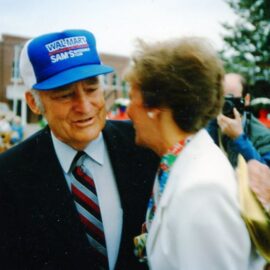

This article is an excerpt from the Shortform book guide to "The Blind Side" by Michael Lewis. Shortform has the world's best summaries and analyses of books you should be reading.
Like this article? Sign up for a free trial here .
Who is Tom Lemming? What is his role in The Blind Side?
Tom Lemming started out as an avid football fan, and became one of the most influential recruiters of all time. Lemming first noticed Michael Oher in a video of Oher playing football, and was immediately inspired to meet him.
Read more about Tom Lemming and his role in recruiting Michael Oher to Ole Miss.
Tom Lemming Recruiting: Discovering Michael Oher
In 1978, a 23-year-old football fan named Tom Lemming decided he would travel to all the high schools in America in search of the best football prospects. He’d interview the players, watch them play, and find out which colleges they were interested in attending. Then, he’d put his discoveries in a book that college coaches could use to recruit young talent.
With no real money or job, Tom Lemming drove as many miles as he could afford across the country, sleeping in his car to save money. He drove close to 60,000 miles in one year and visited up to 2,000 players. He whittled the list down to the top 150 players and designated 25 as the best in the country.
His newsletters were distributed through subscription to collegiate programs. After a few years, when his picks for top prospects had enough time to prove the keenness of his judgment, colleges started to trust him. More than that, high schools and parents started reaching out to him on behalf of players to try to make this list. It took seven years for Tom Lemming’s recruiting business to be profitable, but he was already respected and heralded as the godfather of high school football.
What made Tom Lemming’s recruiting work so valuable was that no one else was doing it. Unlike baseball, where high school players could go straight to the MLB, football players were required to play in college if they wanted to advance their careers. Colleges mostly looked at players in their region of the country because the prototypes for each position were fairly general. But with Lemming’s help, coaches in the South could now find out about players in the Midwest or West. And once the focus on positions changed and prototypes became more distinguished, this wider scope became more necessary.
By the beginning of 1990, Lemming was sorting through close to 3 million players. He was dedicated and had strict criteria for the type of player he chose to highlight as the best. The players had to be talented, productive on the field, recipients of special honors or awards, good students, and of good character. Trouble-makers, poor students, and criminals were not healthy prospects for teams, as their behavior was likely to ruin their eligibility.
These parameters had served Lemming well. In 1995, 14 of his top-25 picks became number one picks during the NFL draft. Sports broadcasting stations and polling organizations started using Lemming’s lists to guide their own top picks. And in 2000, Lemming was asked to select the inaugural team for the U.S. Army High School All-American game, a task he was given each year following.
The New Recruit
The demand for a certain type of left tackle in the wake of Taylor added a new dimension to Lemming’s standards. Before, a high school lineman who came in at 250 pounds was considered good-sized. But with the rise of massive and fast pass rushers, linemen were now required to be monstrous, and the type of person who could play left tackle was even more defined.
Recruits for left tackle now had to be at least 300 pounds, have long arms and large hands, and be fast like a sprinter and light on their feet like a ballerina. But finding this type of player in the high school ranks was like finding a silver dollar in a heap of quarters.
It was for this reason, and this reason alone, that Lemming took notice when he received a grainy, barely viewable video in Spring 2004. He couldn’t make out much, but what he did see was a large tackle coming off the line like a wall and chasing down linemen half his size and with what should have been twice his speed. Lemming couldn’t believe what he was seeing. He was sure that it was the grainy footage or a trick of the camera. No person of that size should move as quickly as that boy did. That boy was a young black student named Michael Oher, and Lemming had to meet him.

———End of Preview———
Like what you just read? Read the rest of the world's best book summary and analysis of Michael Lewis's "The Blind Side" at Shortform .
Here's what you'll find in our full The Blind Side summary :
- How Michael Oher went from the projects in Memphis to the NFL
- Why the combination of size and speed became essential for football stars
- How Oher was taken in by the wealthy Tuohy family






